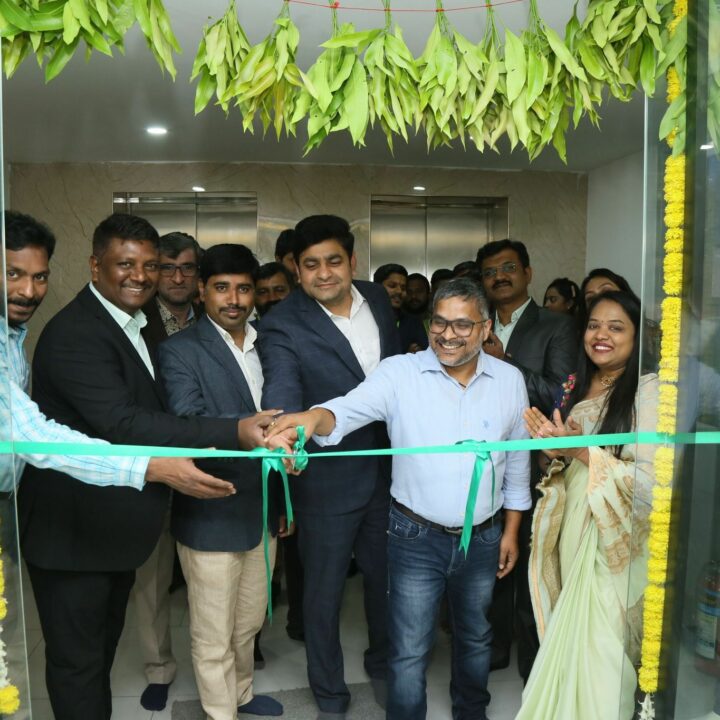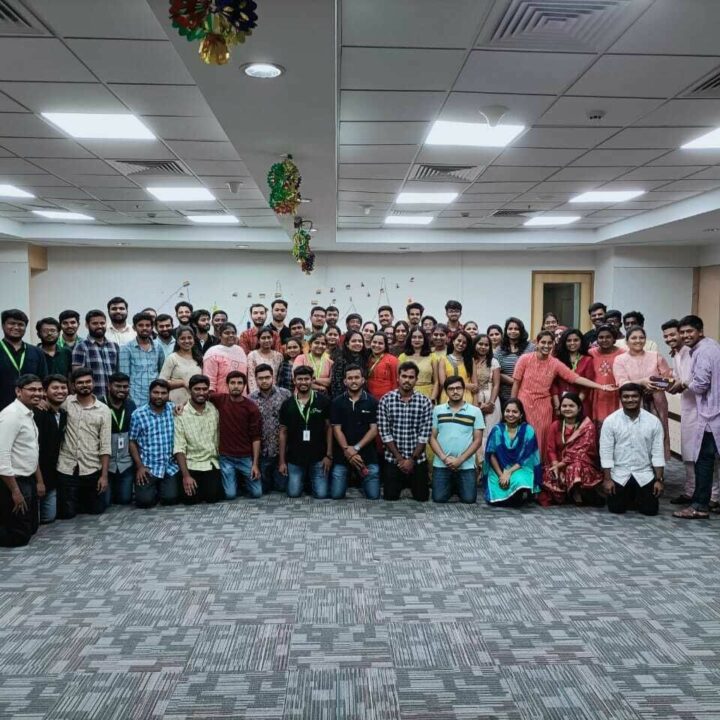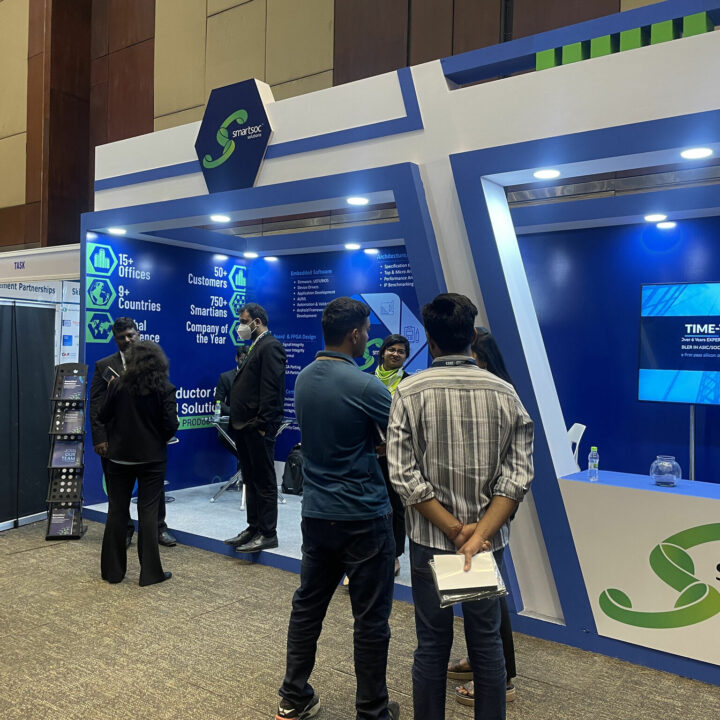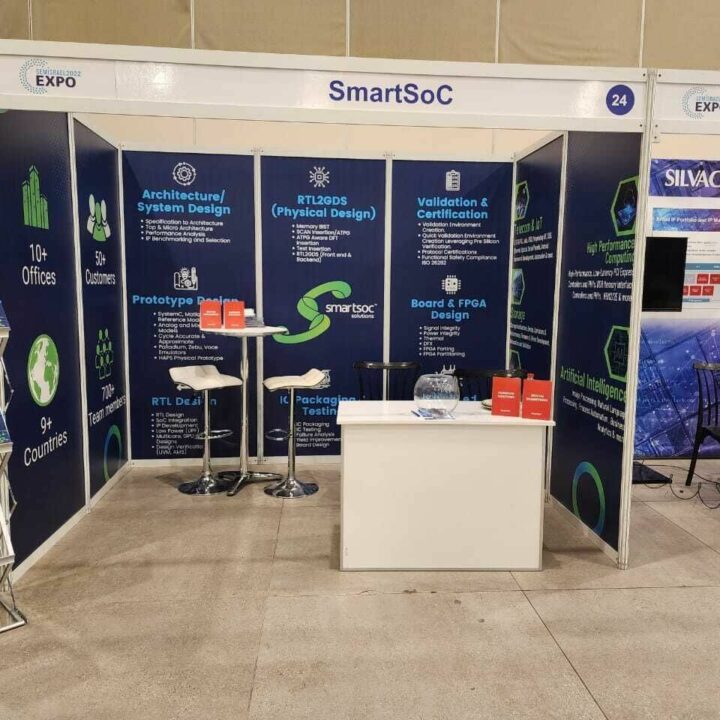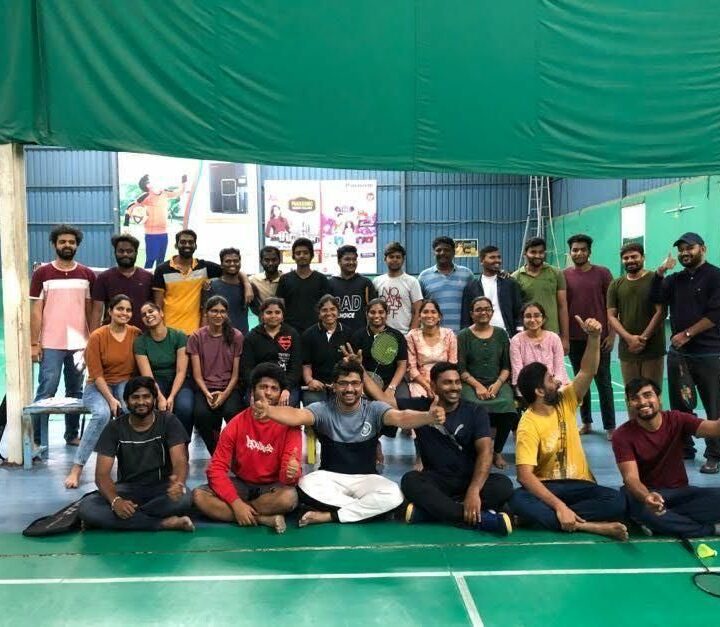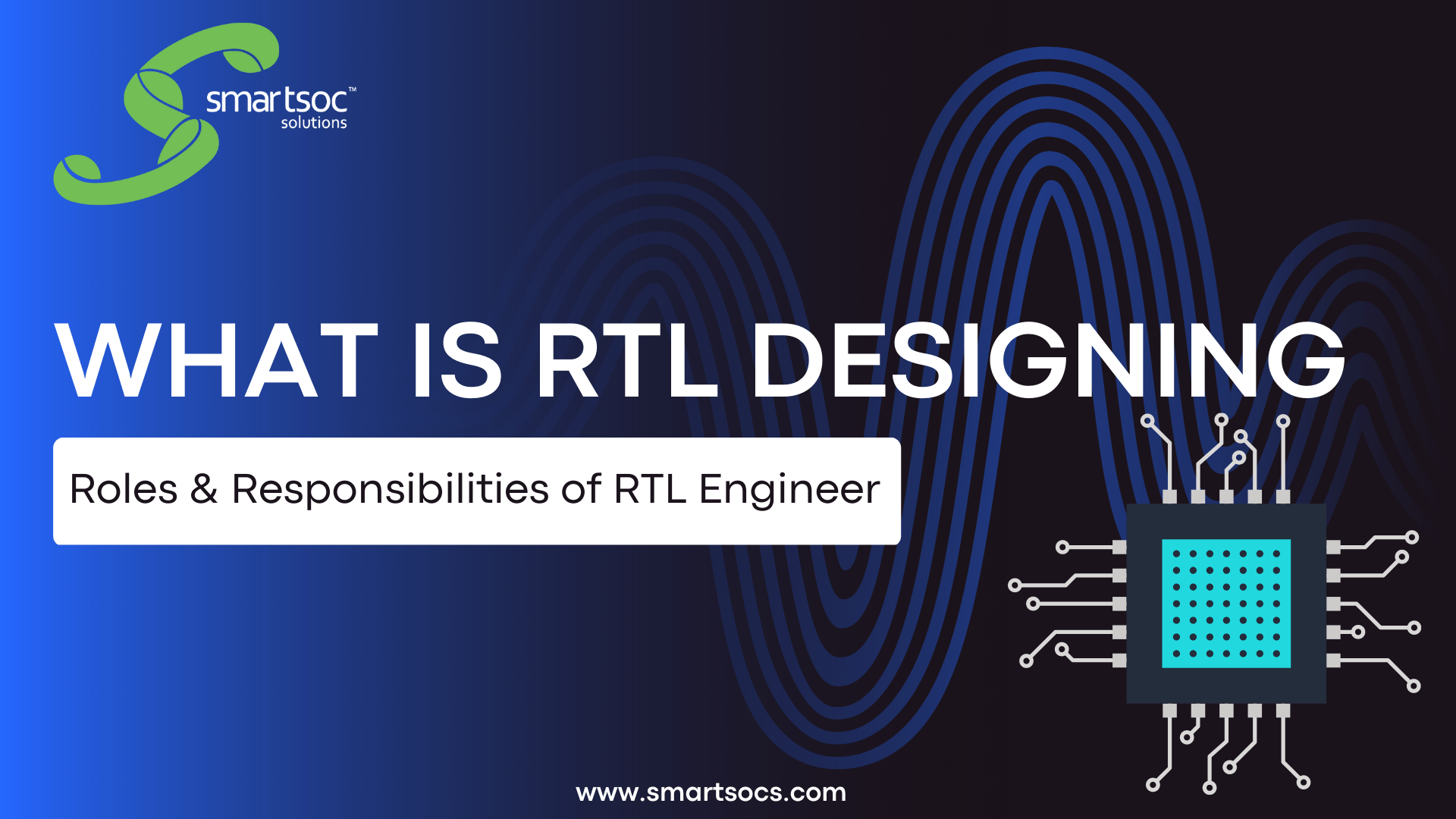What is RTL Designing? | Roles & Responsibilities of RTL Engineer
With the modern and complex products thrown at us every day, it becomes quite a narrative for the product and innovation-led companies to come up with the best suited and tailor-made products for their respective target audience. But with all this hyped up, the inevitable question that pops up is how it is being evaluated, validated and what checks are being put in place.
RTL design engineer has the answer to these intriguing questions. He does the heavy lifting for modelling and designs complex digital circuits to build the quality hardware models to achieve the level of abstraction — whether it is rtl to gds, to do rtl code to be equipped with rtl tools, or anything!
What does RTL Design stand for?
RTL stands for Register-Transfer-Level. It’s an abstraction for digital circuitry and creating a simulation of the viable product. There are basically two forms of it — Sequential Circuit and Combinational Circuit. With these two, an RTL design engineer can craft and implement all types of circuits such as Counter, Memories, Adder, Multiplier and State-machines. An engineer prepares multiple abstraction levels to find out the best possible simulation through HDL coding like Verilog HDL with rtl tools. With the use of the two most common variants of RTL – VHDL and Verilog, an engineer is easily able to put the complex functionality in simple text entry language through rtl code.
From Apple to Verizon, top-notch companies are fighting for the dominant spot in the market through their innovative and breathtaking products which can solve the pain points of the customers. Millions of dollars are being spent for R&D and simulation of building prototype models and RTL Designing plays a pivotal role in achieving that ambitious goal.
Skills required for the job
Currently, RTL Design Engineers are in high demand in the market. To be qualified as one, one needs to have a basic qualification as a bachelor’s degree in Engineering, Information Technology, Computer Science, or related field. A bit of exposure to Hardware Engineering would be an added advantage. It’s not only about cracking vlsi rtl design interview questions, it’s about having prolific knowledge about the real rtl design.
The preferred qualification for an RTL Design Engineer would be:
- RTL Designing knowledge with Verilog or SystemVerilog.
- Exposure to Cryptographic knowledge, Key and hash functions, random number generator, encryption/signatures algorithms (AES, SHA, GMAC, etc.)
- Practical knowledge and exposure to defining HW/FW interfaces.
- Linting knowledge and practical exposure in CDC and LEC.
- Thorough understanding and knowledge of database management flow.
- Strong programming suits various languages such as Verilog, C/C++, Python, Perl with a knack for problem-solving abilities.
- Fundamental understanding of Bus or Pin Planning, Block or Chip Level Floorplanning, Clock Tree Synthesis, Static Timing Analysis, Placement, Parasitic Extraction, Optimization, Routing, IR drop analysis, Physical Verification and Sign Off.
- Construction and multiple iterations of module test cases with a close eye on the IP development verification process.
- Sound knowledge of DSP subsystems and running ASIC development.
- Sound communications skills to articulate the ideas in simple terms to various stakeholders and bridge the gap of understanding, if any. An RTL engineer needs to work in tandem with performance modeling, validation, and implementation teams and take care of all functional requirements and performance metrics.
Along with that, as per AmbitionBox, the required skill set according to the industry are: 1) Design Engineering 2) Architectural engineering 3) Logic Design 4) programming (C, C++, Perl, Python) 5) Design Verification 6) Simulation 7) System Verilog 8) SOC 9) RTL Coding
Roles & Responsibilities of an RTL Engineer
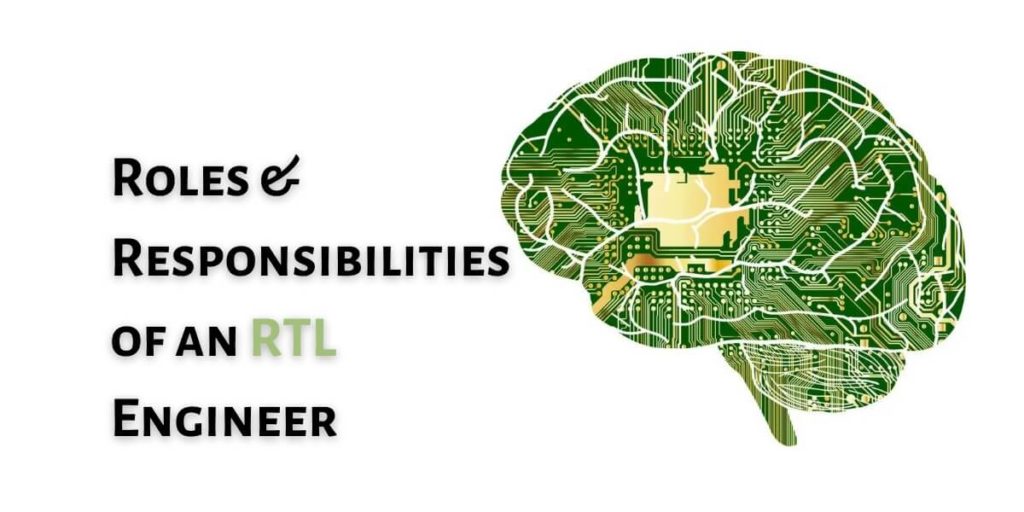
An RTL design engineer breaks down the architecture into multiple small silos to verify, validate and simulate the prototype circuitry. His main job is to prepare the micro-level architecture of different digital blocks for mixed-signal circuits. With the proper simulation, it is destined to become a guide for building the prototype.
He needs to develop accurate synthesis scripts to keep all the parameters in check, in RTL code for reuse in block-level integration and also design different behavioral models of the circuits through FSM. The code needs to be written in Verilog or VHDL and the engineer needs to be proficient in it.
In the end, he finalizes the simulation after multiple iterations and simulations. His routine task comprises design verification on multiple stages and blocks by writing insightful assertions, code debugging, and frequent interaction with multiple cross-functional teams. Along with this, he also needs to keep a keen eye on reducing the labour cost of formal and coverage model checking by mitigating the gap between the design engineer and the verification engineer. The ultimate KPI that the RTL engineer is judged on is how accurate results can be predicted from the entire verification process.
An RTL engineer, in a nutshell, is a highly qualified engineer who not only takes care of the abstraction but also is pivotal in holding multiple departments together for timely design and delivery. From IP development to digital subsystem designing to exposure to FPGA platforms like Xilinx or Altera, he is one army person who takes the product development to the next phase.
Industry Scope for RTL Engineers

As the industry is growing rapidly and the need for intelligent hardware products is skyrocketing, the demand for skilled RTL engineers is growing every day. Companies are scouting heavily for talented engineers, and they are not shying away from paying them handsome packages to attract them. Few specific areas where they are in dire need are:
- The top US Based MNCs: Multiple US-based organizations have their own development centers in India. Companies like Qualcomm, Nvidia, Intel, Broadcom perform the complete end-to-end product designing from the Indian development center and they keep on headhunting for the top talents to integrate into various fields such as RTL & Physical design, verification and complete layout, final 360-degree validation and many more.
- Multiple product companies/start-ups: With the ‘Make in India’ initiative and government support, the entire startup ecosystem is booming in the entire country. Many organizations that are foraying into digital products do need RTL engineers or design engineers. Based on the requirement and the product requirement, engineers do have a decent scope in these organizations.
- VLSI Service companies: There are a plethora of VLSI service companies. The main methods for their operations are – Resource Augmentation and Development and verification of RTL Intellectual Property. (IP). Engineers in these organizations take care of integration and work on resolving issues in main chip design and creating a proper verification flow.
In general, both product and service companies have scopes and requirements for RTL Design engineers, but with the recent trend, engineers find more challenging and exciting tasks in terms of designing in product companies. Interested students need to be thorough with the concepts and fundamentals such as rtl design: step by step tutorials and preparing the rtl code along with familiarity of rtl tools, to be ready to crack such prestigious companies.
Expected remuneration
With the high demand in the industry, it is not much difficult for the right talent to find a good job that pays handsomely. Though the salary range varies based on experience, projects and fundamental knowledge and exposure of the candidate, on average, can easily start with 6-8 lakhs worth package and with 5+ years of experience, the salary for RTL design engineers can go up to staggering 20 lakhs.
Intel and Qualcomm are the paymasters for this role and on average, even in small to medium companies, engineers with 1+ years of experience can fetch quite a high amount of salary. (Source: Glassdoor & AmbitionBox)


